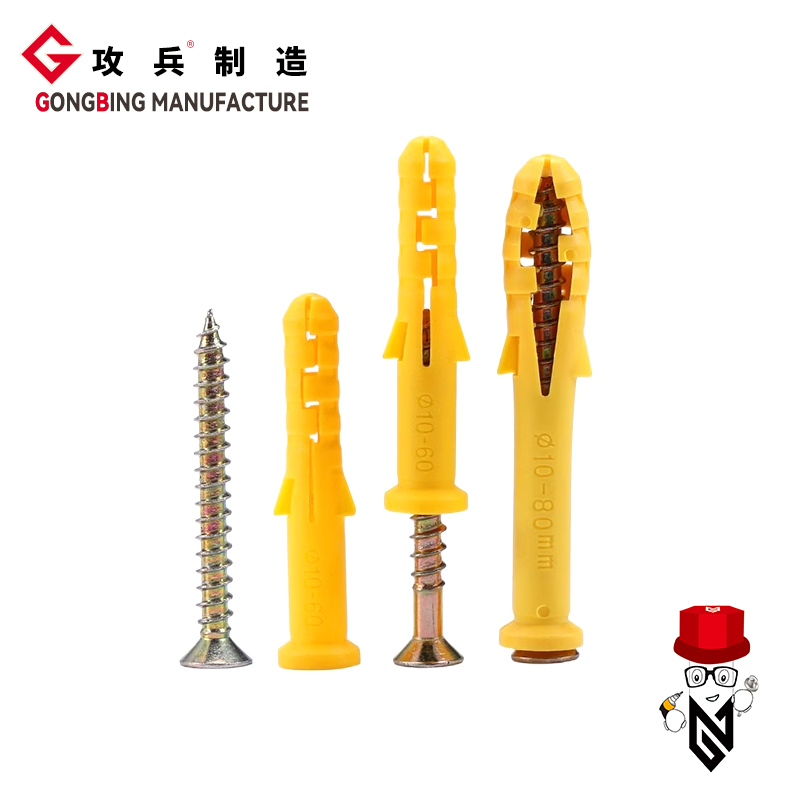countersunk head self tapping screw
Understanding Countersunk Head Self-Tapping Screws
In the realm of fasteners, screws play an essential role in numerous construction and manufacturing applications. Among these, the countersunk head self-tapping screw stands out for its unique design and functional attributes. This article aims to explore the characteristics, uses, and advantages of these specialized screws.
What Are Countersunk Head Self-Tapping Screws?
A countersunk head self-tapping screw features a conical head design, allowing it to sit flush with the surface of the material into which it is driven. This design is particularly beneficial in applications where a smooth finish is desired. The screw is often made from various materials, including stainless steel, brass, and carbon steel, each chosen for their specific properties, such as corrosion resistance or strength.
The self-tapping aspect of these screws enables them to create their own hole as they are driven into a material, thus negating the need for pre-drilling in many instances. This feature not only saves time during installation but also enhances the overall efficiency of the fastening process.
Applications
Countersunk head self-tapping screws are widely used in various industries, including woodworking, metalworking, and construction. In woodworking, they provide a means to securely attach components without visible fasteners, maintaining an aesthetically pleasing appearance. In metalworking, these screws are often employed in the assembly of metal parts, where their ability to create threads in the material is particularly valuable.
countersunk head self tapping screw

The automotive and electronics industries also make use of these screws due to their ability to accommodate different materials and thicknesses, creating strong, reliable joints. From fastening panels to securing wiring, countersunk head self-tapping screws prove to be versatile and effective.
Advantages
One of the primary advantages of countersunk head self-tapping screws is their ease of use. The self-tapping mechanism allows for quick installation, making them ideal for both professional tradespeople and DIY enthusiasts. Additionally, their flush fit means that they can be used in applications where space is limited or where a streamlined appearance is crucial.
Moreover, the design of the countersunk head provides additional benefits in load distribution. By allowing the screw to sit flush against the material, it reduces the risk of snagging or catching on surfaces, which can be an important safety consideration in certain applications.
Another significant benefit is the variety of drive types available, such as Phillips, slotted, and hex drives. This diversity allows users to choose the most suitable option depending on the specific requirements of their project, enhancing flexibility and usability.
Conclusion
In conclusion, countersunk head self-tapping screws demonstrate a combination of practicality and versatility that makes them a preferred choice in a wide array of applications. Their unique design not only provides aesthetic benefits by allowing for a flush finish but also delivers functionality by facilitating straightforward installation and robust connections. Whether in construction, woodworking, or metalworking, these screws continue to serve as an indispensable component in the toolkit of professionals and DIY enthusiasts alike. By understanding their features and applications, users can make informed decisions that enhance the quality and efficiency of their projects.
-
Weatherproof Plastic Expansion Anchors for Outdoorവാർത്തJun.06,2025
-
Sustainability in the Supply Chain: Eco-Friendly TEK Screws Productionവാർത്തJun.06,2025
-
Load-Bearing Capacity of External Insulation Fixingsവാർത്തJun.06,2025
-
Double Head Bolts: Enhancing Efficiency in Industrial Machineryവാർത്തJun.06,2025
-
Corrosion Resistance in Chipboard Screws: Coatings for Wholesale Durabilityവാർത്തJun.06,2025
-
Butterfly Toggle Bolts : Enhancing Structural Resilienceവാർത്തJun.06,2025
